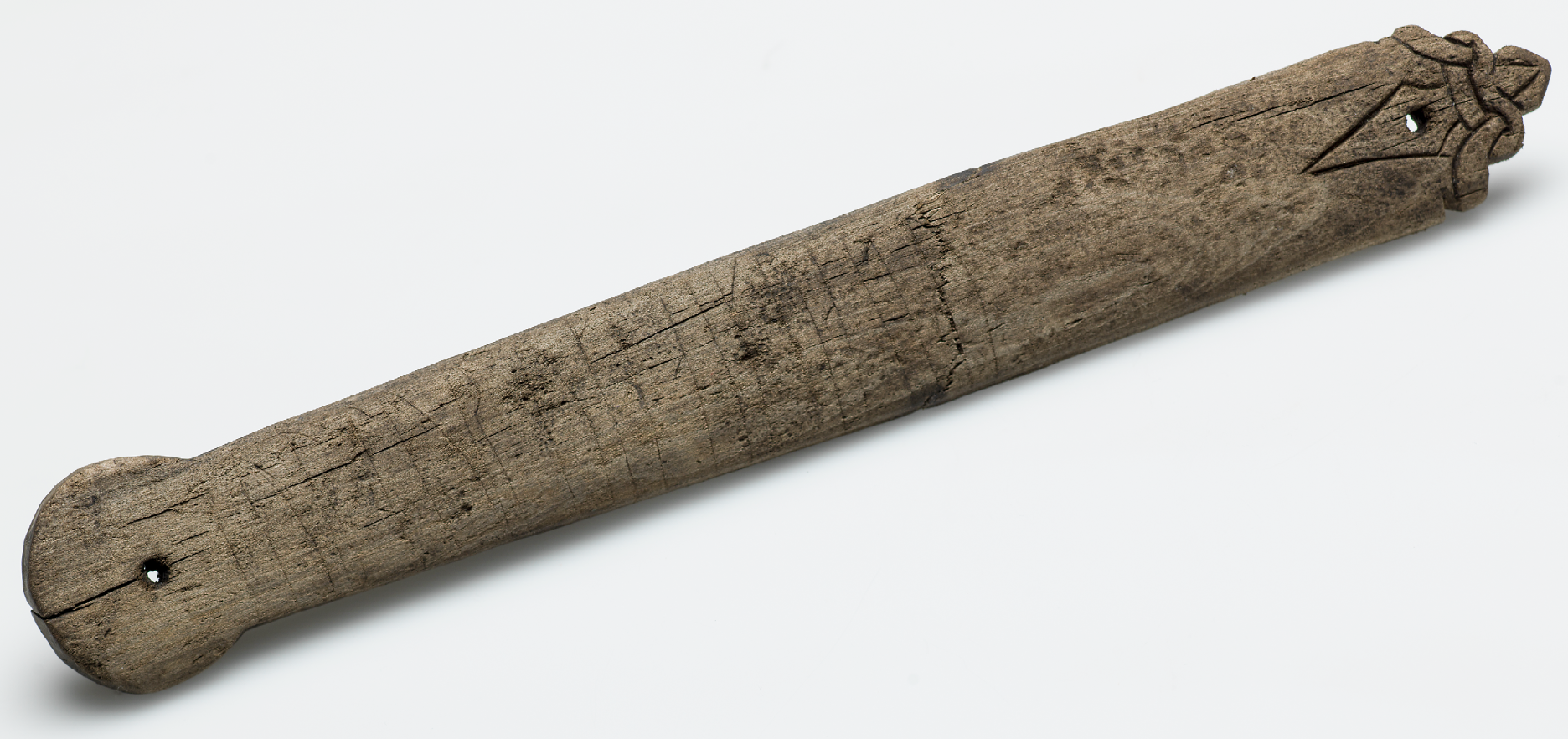Basque ethnography at a glance

Runic inscription N-32395. Courtesy of Åge Hojem, University Museum, Norwegian University of Science and Technology, Trondheim.
Most Scandinavian Viking-Age/early medieval runic inscriptions can be read either in Scandinavian or, less commonly, in Latin, but a few inscriptions, seemingly composed in an unencrypted natural language, cannot be given a Scandinavian or Latin interpretation. Nor have provisional checks succeeded in linking these inscriptions to a range of languages in northern, western, and eastern Europe (Fennic, Samic, West Germanic, Romance, Celtic, Slavic, Baltic).
The present study adopts the hypothesis that this set of inscriptions represents a non-Indo-European language other than a northwestern Fenno-Ugric one, viz., Basque. While documentary evidence exists for Scandinavian voyages to the Iberian Peninsula in the 9th–11th centuries and for pilgrimages in the following centuries, no archaeological or documentary data suggest Basque visits to Scandinavia at this time. Not bolstered by non-linguistic evidence, the hypothesis therefore rests solely on (a) the lack of matches to other conceivably relevant languages and (b) the degree of structural and lexical fit to a reconstructed form of recorded Basque.
As a test case, we select a late 11th century inscription from Trondheim, Norway, with the number N-32395 (Hagland n.d.). “[A]pparently nonsensical” (Hagland 2010), the inscription reads in transcription: iur lur uki aikuaitu. Couched in a script that often neutralizes essential phonetic distinctions (e.g., u = [u], [o], [w], k = [k], [g], t = [t], [d], etc.) and consisting of merely seventeen runes, N-32395 could in principle allow for matches with words or messages in many different languages. All previous matching attempts having failed, however, we try to determine whether, or to what extent, the text of N-32395 can be related to Basque lexicon and structure. In a nutshell, we obtain the following results:

The text of N-32395 and its transliteration.
Runic iur may be a radical *jor, used as a sentence-initial imperative, which derives from an ancient verb *jori, preserved in the adjective jori ‘abundant’ and its modern derivative joritu ‘enrich, improve; fertilize’. Runic lur, the direct object, reflects lur ‘earth, land’. The syntactic combination iur lur corresponds in modern Basque to the phrase jori-tu lurr-a! (fertile-PERF.PART land-DEF) ‘fertilize the land!’ (definite-article marking here being a later historical development). Runic uki recalls ogi ‘bread’, again, as expected, without the article. Runic aiku matches the Biscayan presentative aiko (cf. French voici, voilà), without direct equivalent in English. Runic aitu, finally, has several potential counterparts in Basque. Tentatively, we choose the Biscayan Basque option a(d)itu ‘observe, note’, employed as a transitive imperative. Under a Basque hypothesis, the full meaning of this previously baffling inscription would then be: ‘Improve/fertilize the land, and you will have bread!’.
In conclusion, the text of N-32395 displays (1) recurrent parallels to Basque lexical entries, (2) compatible phonology, (3) appropriate morphological forms, (4) a cohesive syntactic structure, and (5) a coherent semantic sense. The text, moreover, recalls old sayings or proverbs attested in the western European cultural tradition.
Stig Eliasson – Professor emeritus at Johannes Gutenberg University in Mainz (Germany)


Dear Stig,
What do you mean when writing “(definite-article marking here being a later historical development)”? After all, the definite article occurs in Roman time.
Best,
Theo
22 July 2017
Dear Theo,
Thank you very much for your comment relating to my remark that the marking of definiteness in the two presumed nouns in the Trondheim inscription N-32395 is a later historical development. My remark is not meant as a stand on the date when the Basque definite article first appeared historically. It only refers to how the use of the definite article was gradually extended across the lexicon to a certain class of nouns in a given syntactic position. As you know, countable and uncountable nouns are treated differently in citation forms in the short 12th century Basque word list compiled by the French pilgrim Aimery Picaud. There, countable nouns appear with, uncountable ones without, the definite article. Furthermore, Santazilia (2013: 229f.) notes that “the article penetrates … more easily into countable nouns than into uncountable nouns in object function”. If the hypothesis that the 11th century inscription N-32395 is Basque is borne out, the lack of definite-marking in the two mass nouns lur and uki in object position represents, then, a stage before the full extension of the article to this syntactic position.
With all good wishes,
Stig
Reference: Ekaitz Santazilia, “Noun morphology” in Mikel Martínez-Areta (ed.), Basque and Proto-Basque, Frankfurt am Main, 2013.